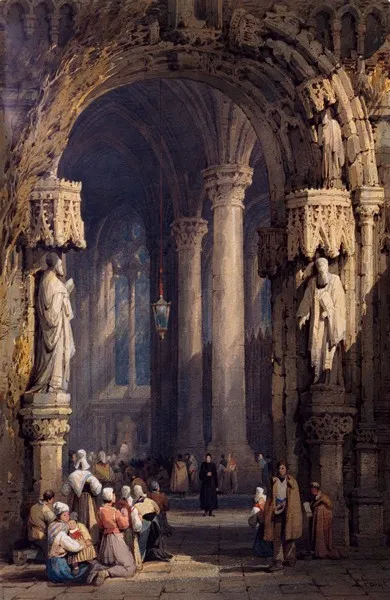Table of Contents
- Historical Foundations of the Scottish Identity
- Core Components of Scottish Identity
- Political Dimensions of Scottish Identity
- Contemporary Challenges to the Scottish Identity
- The Future of the Scottish Identity
The Scottish identity is a rich and multifaceted construct that has evolved over centuries, deeply influenced by history, culture, and social change. Defined by a unique blend of traditions, language, and political aspirations, Scotland’s identity is both deeply rooted in its past and continually reshaped by modern developments. Sociologically, the Scottish identity provides an illuminating case study in how national and cultural identities are formed, contested, and renegotiated over time. As Scotland moves further into the 21st century, the complex layers of its identity become increasingly relevant in discussions about globalization, inclusion, and self-determination.
Historical Foundations of the Scottish Identity
Scotland’s Distinct Historical Trajectory
The foundations of the Scottish identity are inseparable from its distinct historical trajectory. Scotland’s history of independence, its union with England in 1707, and its ongoing political and cultural autonomy have all played pivotal roles in shaping its national consciousness. Unlike many other regions within the United Kingdom, Scotland retained significant elements of its unique identity following the Act of Union, including its legal system, education system, and Presbyterian Church. These institutions have not only provided practical governance structures but also symbolized Scotland’s enduring distinctiveness within the UK.
This preservation of institutional distinctiveness has reinforced a sense of Scottish exceptionalism—the belief that Scotland is culturally and politically distinct from the rest of the UK. This has served as both a source of pride and a focal point for nationalist aspirations, particularly in modern debates surrounding independence and devolution. Moreover, this exceptionalism is reflected in the way Scots perceive their collective past, where figures like William Wallace and Robert the Bruce are celebrated as icons of resistance and autonomy.
The Role of Language and Literature
Language has been central to the construction of Scottish identity. Scots, Gaelic, and English coexist in Scotland, each contributing to a layered and complex linguistic identity. While Gaelic has seen a decline in everyday use, it remains a powerful symbol of Scotland’s heritage, particularly in the Highlands and Islands. Scots, often marginalized as a dialect of English, has gained renewed attention as a marker of cultural authenticity, with its rhythms and expressions often featured in contemporary literature and media.
The literary tradition of Scotland has also played a significant role in shaping its identity. Writers like Robert Burns, Sir Walter Scott, and more contemporary voices such as Jackie Kay and Irvine Welsh have created a rich tapestry of Scottish culture, reflecting both the struggles and triumphs of the nation’s people. Burns, in particular, has become an enduring symbol of Scotland’s egalitarian spirit and cultural pride. Literature and storytelling have thus served as vehicles for transmitting collective memory and reinforcing a shared sense of belonging, while also challenging dominant narratives about what it means to be Scottish.
Core Components of Scottish Identity
Community and Collectivism
Scottish society has long been characterized by a strong sense of community and collectivism. This cultural trait is often contrasted with the individualism associated with other parts of the UK and reflects a deeply ingrained value system that prioritizes social cohesion and mutual support. From the historic clan system to modern community initiatives, this collective spirit has been a defining feature of the Scottish identity.
The emphasis on community is also evident in Scotland’s political landscape, where policies on healthcare, education, and social welfare reflect a commitment to egalitarian principles. Sociologists argue that this collectivist ethos contributes to Scotland’s distinctive political culture, which often leans toward progressive and social democratic ideals. This emphasis on equality and community welfare has also played a significant role in fostering a political culture that is distinct from that of England, reinforcing the perception of a separate Scottish way of life.
Cultural Symbols and Traditions
Scotland’s cultural symbols and traditions are key components of its national identity. Iconic symbols such as the kilt, bagpipes, and tartan patterns are instantly recognizable worldwide and serve as markers of Scottish heritage. These symbols, while sometimes stereotyped, play an important role in fostering a sense of pride and continuity. For example, tartans are often associated with specific clans, offering Scots a tangible link to their ancestral lineage. Bagpipes, once used in battle and ceremonies, continue to evoke a sense of solemnity and celebration, particularly at events like weddings and funerals. These symbols remind Scots and the global community alike of the rich traditions that define Scotland’s unique cultural fabric.
Festivals and events, such as Hogmanay and Burns Night, celebrate Scottish traditions and bring communities together. Hogmanay, with its origins in Viking winter celebrations, is renowned for its torchlight processions and Auld Lang Syne singing, reflecting both ancient and modern customs. Burns Night, dedicated to poet Robert Burns, combines cultural pride with culinary tradition through readings of Burns’ poetry and the serving of haggis. The preservation of these cultural practices underscores the importance of continuity in maintaining a distinct national identity while adapting to the modern world.
Additionally, international celebrations of Scottish culture, like Tartan Day in North America, highlight the global resonance of these traditions and their role in uniting the Scottish diaspora. Tartan Day parades and Highland games showcase Scotland’s heritage to an international audience, fostering a shared sense of belonging among those of Scottish descent. Similarly, events like the Edinburgh Festival Fringe, the world’s largest arts festival, exemplify how Scotland embraces both traditional and contemporary expressions of its identity, ensuring its cultural relevance on the global stage.
Religion and Secularism
Religion has historically been a significant factor in Scottish identity, particularly through the influence of Presbyterianism and the Church of Scotland. The Reformation in the 16th century established a religious framework that profoundly shaped Scotland’s social and cultural landscape. Religious practices, hymns, and moral teachings all contributed to the formation of a shared Scottish ethos.
However, the contemporary Scottish identity is increasingly secular, reflecting broader trends in Western societies. The diminishing role of organized religion has not erased its historical impact but has opened new avenues for defining identity through cultural rather than strictly religious means. The rise of interfaith dialogue and the inclusion of diverse religious communities in Scotland further underscore the dynamic interplay between tradition and modernity in shaping Scottish identity.
Political Dimensions of Scottish Identity
Nationalism and Devolution
Get the full article AD FREE. Join now for full access to all premium articles.
View Plans & Subscribe Already a member? Log in.





